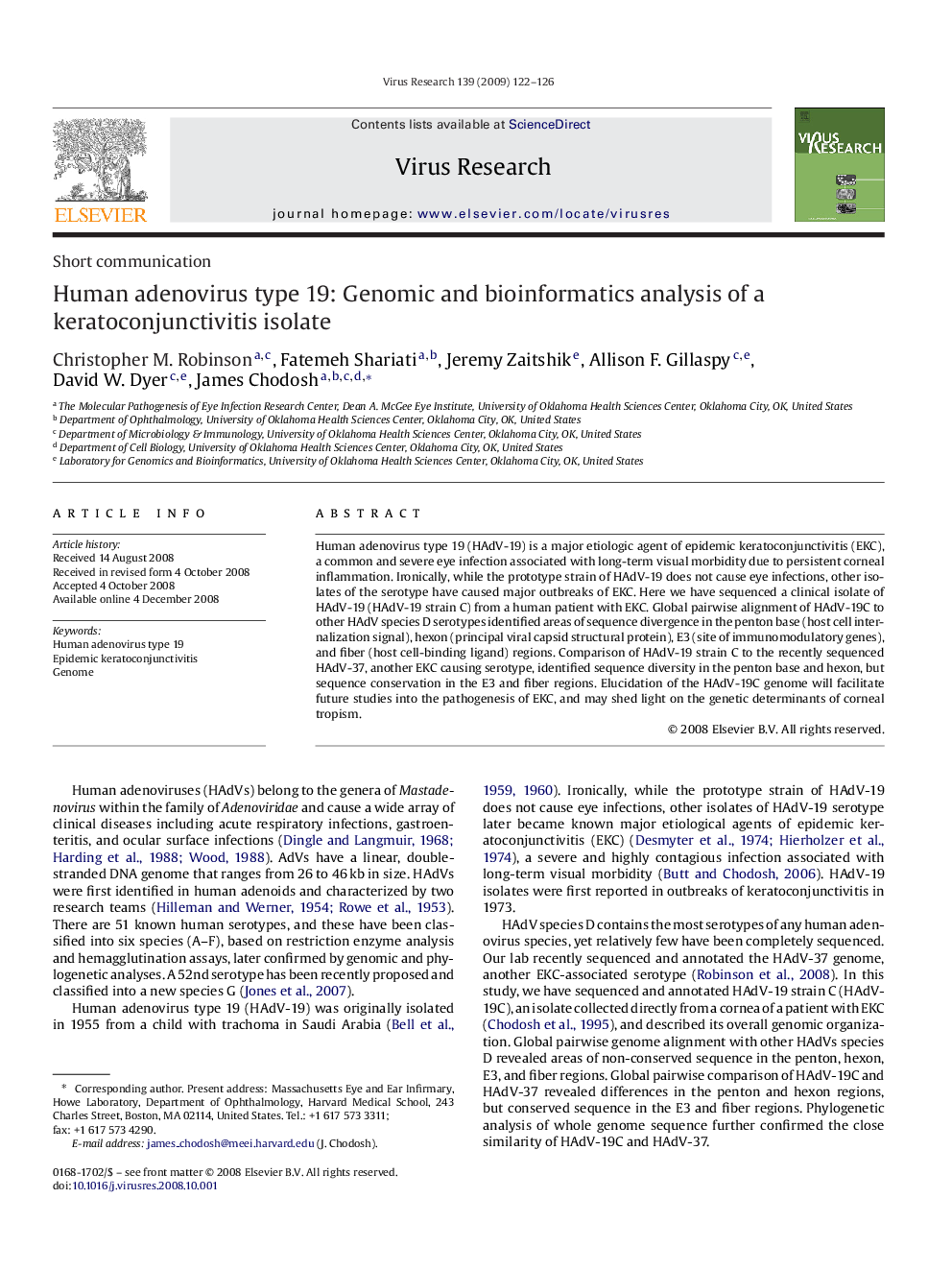| Article ID | Journal | Published Year | Pages | File Type |
|---|---|---|---|---|
| 3430222 | Virus Research | 2009 | 5 Pages |
Human adenovirus type 19 (HAdV-19) is a major etiologic agent of epidemic keratoconjunctivitis (EKC), a common and severe eye infection associated with long-term visual morbidity due to persistent corneal inflammation. Ironically, while the prototype strain of HAdV-19 does not cause eye infections, other isolates of the serotype have caused major outbreaks of EKC. Here we have sequenced a clinical isolate of HAdV-19 (HAdV-19 strain C) from a human patient with EKC. Global pairwise alignment of HAdV-19C to other HAdV species D serotypes identified areas of sequence divergence in the penton base (host cell internalization signal), hexon (principal viral capsid structural protein), E3 (site of immunomodulatory genes), and fiber (host cell-binding ligand) regions. Comparison of HAdV-19 strain C to the recently sequenced HAdV-37, another EKC causing serotype, identified sequence diversity in the penton base and hexon, but sequence conservation in the E3 and fiber regions. Elucidation of the HAdV-19C genome will facilitate future studies into the pathogenesis of EKC, and may shed light on the genetic determinants of corneal tropism.
